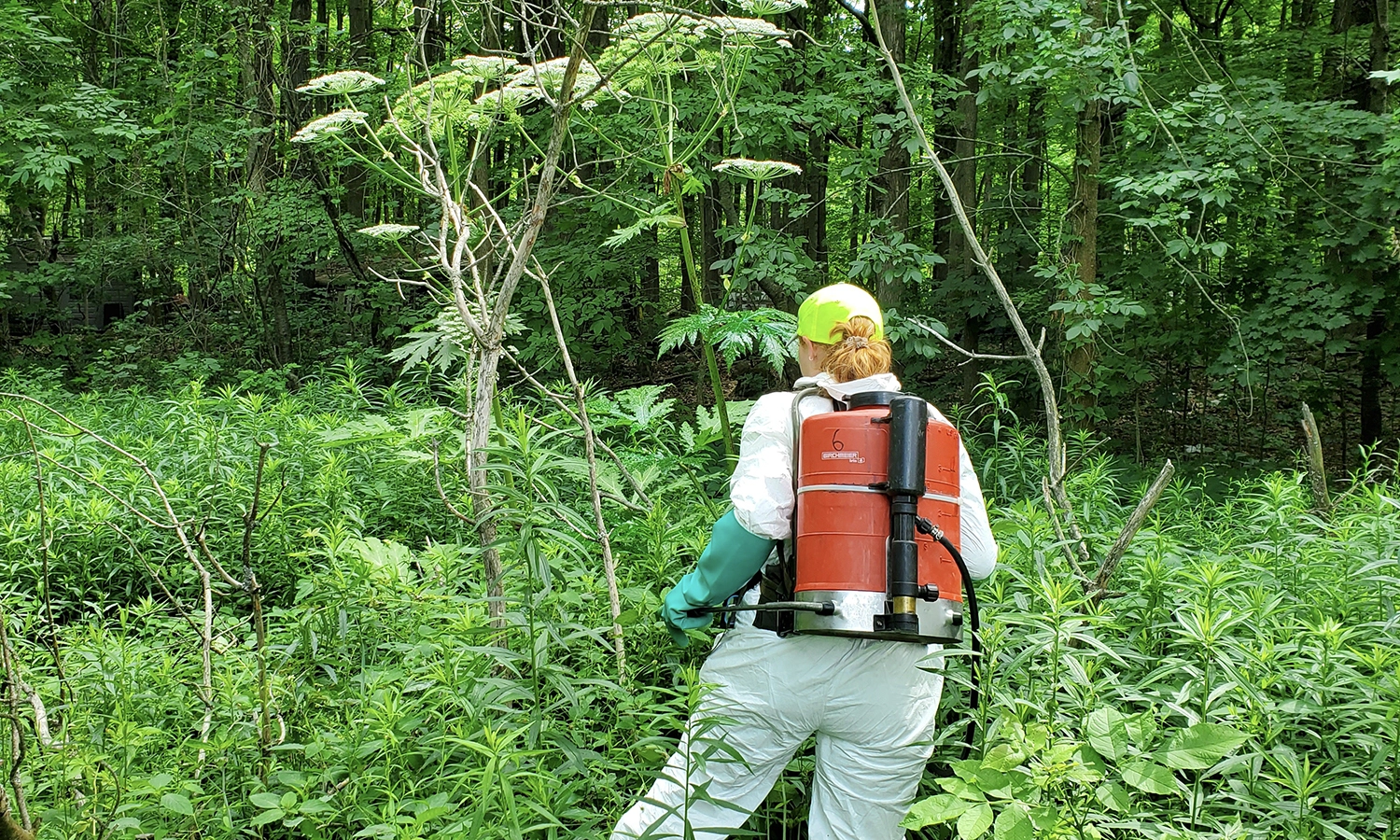
HWS News
29 November 2023 • Research • STEM Eradicating Invasive Giant Hogweed with USDA Grant
HWS' Finger Lakes Institute Awarded $400K grant from USDA to continue efforts to control the invasive plant giant hogweed.
The USDA Natural Resources Conservation Service (NRCS) recently awarded HWS’ Finger Lakes Institute a $400,000 grant to control the invasive plant giant hogweed (Heracleum mantegazzianum) across 12 counties in the Great Lakes Basin. This award is a part of the Great Lakes Restoration Initiative. This program continues the work of a similar program funded by NRCS from 2017 to 2022.
"Removing invasive species on land is critical for maintaining ecosystem services that protect our Finger Lakes and their watersheds. We are grateful for the USDA support and partnership with the NYSDEC for this program." Lisa Cleckner, FLI Director
Giant hogweed is a noxious, herbaceous plant that can grow more than 10 feet and produces sap that causes photosensitivity and severe burning to human skin – making it a significant threat to human health and safety. Giant hogweed growth threatens native habitats and can negatively impact water quality through increased soil erosion. Unfortunately, giant hogweed is widely distributed throughout the Finger Lakes.
The FLI will hire four seasonal staff members annually to work alongside NYS Department of Environmental Conservation Giant Hogweed Program field staff to control giant hogweed. Technicians will control and monitor known giant hogweed infestations across the Great Lakes Basin in New York. Depending on site characteristics, technicians may mechanically remove (cut down) giant hogweed plants, being careful not to disturb the massive seedheads by carefully removing and bagging them separately. In larger populations, technicians will employ chemical treatment.
Naja Kraus, NYS DEC Giant Hogweed Program coordinator, is grateful for the funding support from the USDA that allows for a stronger partnership with the Finger Lakes Institute. “The additional control staff and support since 2016 allowed the giant hogweed program to expand and reach many more sites than we otherwise could have visited, greatly increasing DEC’s program efficacy. More than 60 percent of the known giant hogweed sites statewide were eradicated due to prior control efforts. This valuable partnership is certainly one of the reasons for our success,” says Kraus.
Additionally, a part-time outreach coordinator at the FLI will develop educational materials and programs focusing on giant hogweed and other terrestrial invasive species. These programs will include training, workshops, tabling events and more.
“Taking a comprehensive approach to managing giant hogweed requires going beyond chemical and mechanical removal. Education and outreach are imperative to invasive species control and are cornerstones of FLI programming. Teaching stakeholders about the possible impacts of invasive species and how to prevent their spread is the most cost-effective management tool,” says Sam Beck-Andersen, FLI Associate Director and Finger Lakes PRISM Coordinator.
“Removing invasive species on land is critical for maintaining ecosystem services that protect our Finger Lakes and their watersheds. We are grateful for the USDA support and partnership with the NYSDEC for this program,” says Lisa Cleckner, FLI Director.
The photo above features a Finger Lakes Institute field technician who was chemically treating giant hogweed plant in 2021. Photo credit: Sydney VanWinkle.



